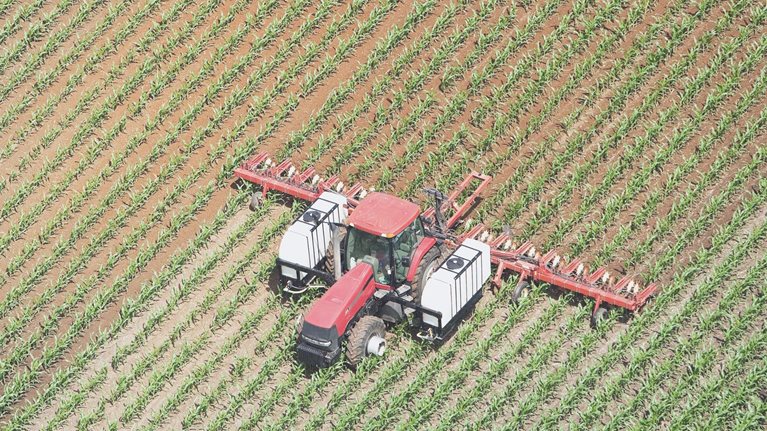Companies in many industries have found they can create value by applying digital and analytics technologies to new business models and product offerings. Now, agriculture players, from farmers to end customers, are discovering that these technologies can play a role in optimizing the fiendishly complex agriculture supply chain.
Using the torrent of data they are capturing, leading agriculture players are following the lead of companies in other industries by building digital twins of their physical supply chains. These virtual replicas enable companies to run simulations and optimizations, leading to significant potential savings on the cost of moving crops through the system.
In this article, we discuss why agriculture supply chains are so complicated and how companies can use digital and analytics technologies to optimize them. Players that employ techniques such as digital twins could achieve a competitive advantage in a challenging market.
A complex supply chain
Supply-chain processes are inherently complex across industries, with multiple functions interacting with different, potentially conflicting objectives and numerous dependencies between material and information flows. The agriculture supply chain is further complicated by fragmented inbound and outbound networks. The typical agriculture supply chain involves three steps: from farmers to intermediate silos, from silos to transformation plants, and from transformation plants to clients. Each step requires multiple decisions (Exhibit 1).

For each decision, the number of possible solutions mires optimization analysis in complexity. Supply-chain fragmentation multiplies the number of possible flows at each step, giving rise to thousands of possible outcomes. For example, one company had more than 300 grain varieties, more than 300 silos, more than 7,000 other storage points, and more than 200,000 transportation options.
The situation is further complicated by the uncertainty of each outcome. This uncertainty arises from two main sources: operational factors, such as unpredictable yields in each field, and external factors, such as meteorological conditions, inputs, farmer capabilities, and pricing volatility arising from global imbalance in supply and demand. In the case of sugar, for example, our analysis of ten years of crop-yield data reveals more than 150 agronomic scenarios (defined in a series of potential yields per parcel) that could be relevant to crop-collection planning and allocation logistics.
How digital twins can help
Advances in digital and analytics technologies offer a way to optimize the agriculture supply chain. The agriculture industry is capturing more data than ever, on everything from agronomy to the weather to logistics to market price volatility. Data storage capacity has increased, storage cost has plummeted, and computational power has grown. Meanwhile, both predictive data science and prescriptive optimization techniques have matured and gained visibility.
One compelling way to use digital and analytics technologies is to create a digital twin of the physical supply chain—from farmers to end customers—and use it to run virtual simulations and optimizations. Digital twins can include all elements of the supply chain and its interfaces, including procurement, production, inventory points, transportation, warehousing, and points of sale for finished goods. Players can calibrate mathematical models to include a variety of objective functions, such as profit, throughput, cycle time, or inventory optimization, depending on the organization’s needs.
Would you like to learn more about our Agriculture Practice?
The value of the digital twin lies in its robust predictive power. It uses algorithms based on artificial intelligence to explore all possible planning and scheduling combinations and variables—for example, lot sizes—while performing multivariate function optimization within user-defined constraints. Planning and scheduling optimizers can then be rerun in real time when unexpected events occur. For example, rush orders or demand changes can be immediately integrated into a revised schedule.
The digital twin also offers rapid scalability, providing initial insights quickly as it adapts dynamically to user needs. Its agile approach allows for speedy digitization, starting with a minimum viable product covering 80 percent of user needs in two to three months and then continuously updating as those needs change. Short development cycles further ensure that solutions evolve quickly.
How to implement a digital twin
Digital and analytics have become a priority for executives as their value becomes increasingly clear. More than half of manufacturing companies, for example, are piloting digital programs in their operations.1 While this trend is promising, many companies struggle to successfully scale digital and analytics pilots to capture their full potential. McKinsey research and experience show that less than 30 percent of companies transition successfully from pilot phase to a fully scaled solution.
Most companies understand the technical challenges of implementing a digital twin: developing the solution’s core engine, creating a user interface to support decision making, and integrating the solution into the IT landscape through bidirectional interfaces with existing systems, such as the enterprise-resource-planning systems of plants. Value capture requires a threefold approach (Exhibit 2). Yet even companies with strong technical capabilities may fail to capture the full potential of digital twins. Success requires two additional ingredients:
- Sufficient industry and supply-chain expertise to define the objective function of the digital twin. The solution requires an end-to-end perspective and the right level of physical and timing detail to support informed decisions regarding incremental precision, the pace of implementation, and execution.
- Change-management efforts aimed at all stakeholders, from farmers to agriculture players. Farmers should be prepared for changes in crop-collection planning and collection logistics, and they should be advised that the changes have a potential upside: increased compensation for their crops. When one agricultural player recently optimized its supply chain with a digital twin, up to two-thirds of farmers saw changes in their crop collection periods—and crop compensation increased 3 to 5 percent. Agriculture supply-chain teams also need a mindset shift. They should be encouraged to use digital twins for planning and exception management rather than falling back on frequent rescheduling and firefighting activities.

Today’s agriculture players face an increasingly challenging environment, but digital and analytics offer powerful sets of tools to unlock new value for those who know how to use them. While pitfalls abound on the journey to adoption, the benefits of success are clear. Digital and analytics technologies can arm well-placed industry leaders with a new source of competitive advantage by unleashing untapped value within the agriculture supply chain.


